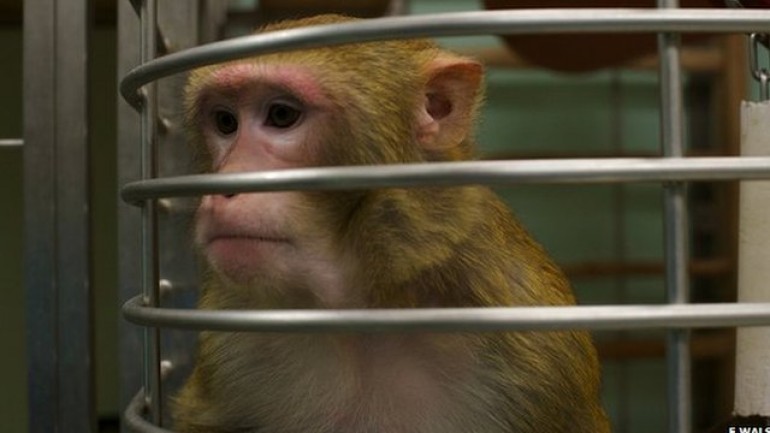In this film, Vice News has managed to gain rare access to a nonprofit laboratory located in the Netherlands, the sole purpose of which is to tests some of the worlds most deadly viruses and diseases on live monkeys in order to gain insight into how they can affect the body of these primates. The facility itself is called the Biomedical Primate Research Centre or BPRC and they are allowing Vice News to film inside so we can see with our own eyes whether testing on monkeys and the animals welfare can go hand in hand.
Testing on non human subjects in the past has led to significant breakthroughs, such as the polo vaccine and treatments for HIV and AIDs, the BPRC is the largest facility of its kind in Europe and therefore attracts a lot of negative attention from animal rights activists, regardless of the fact that it is also meant to be one of the more forward thinking labs when it comes to the care of it’s animals.





At 18:07, it looks like the monkey is feeling pain and moving. WTF is up with that?
Do what it takes. I’m pro science
I’m pro science as well, which is why I know that animal experimentation is holding us back. It isn’t the 19th century anymore and we have plenty of technology that is far more reliable than animals, like computer models, artificial blood, muscle, soft tissue, and much more. Check out the work of the Dr. Hadwen Trust or the International Network for Humane Education, for example. This is where science is headed.
Animal experimentation is still the most efficient method for conceptualising how viruses, toxins, diseases, and products will effect a particular population. In-vivo tests are often used in conjunction with in-vitro (“within glass”) and computer models to produce more intuitive, clear, and thus credible, results. While the alternatives to animal testing provide us with a snapshot into what the future may hold, they are still in their infancy and are yet able to provide results of the same calibre that animal testing provides. It is not a question of the reliability of the organisms used, but more so of how well they represent a chosen population biologically. For example, in neonatal baby research, researchers use Guinea pig pups as a model for a prematurely born human baby as the internal structure ( where organs are placed and how large they are etc) of a Guinea pig pub more closely resembles that of a newborn baby.
Ouch